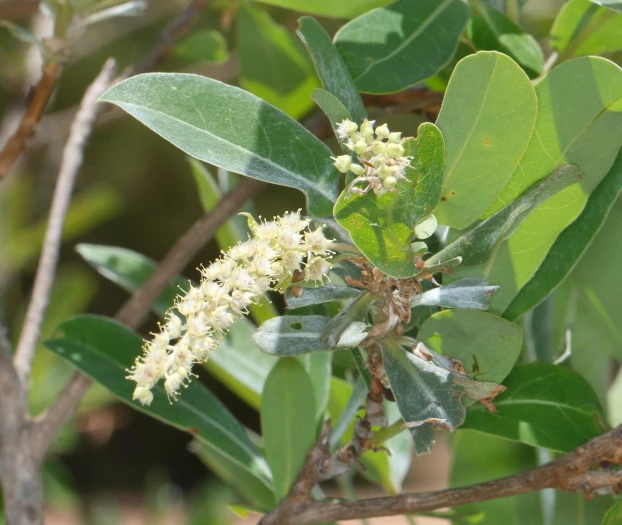Silver Cluster-Leaf
(Terminalia sericea)
Silver Cluster-Leaf (Terminalia sericea)
/
/

Alan Manson
CC BY 4.0
Image By:
Alan Manson
Recorded By:
Copyright:
CC BY 4.0
Copyright Notice:
Photo by: Alan Manson | License Type: CC BY 4.0 | License URL: http://creativecommons.org/licenses/by/4.0/ | Rights Holder: Alan Manson | Publisher: iNaturalist | Date Created: 2022-12-01T11:43:33-08:00 |
























Estimated Native Range
Climate Requirements
| • Precipitation | 19" - 36" |
| • High Temp. | 84°F - 97°F |
| • Low Temp. | 37°F - 53°F |
Summary
Terminalia sericea, commonly known as silver cluster-leaf or mususu, is a deciduous tree native to the open mixed woodlands and savannas of southern Africa, where it is often found on sandy soils. It is a pioneer species that can tolerate a range of conditions, including drought and temporary waterlogged soils. This adaptability allows it to thrive in disturbed areas and transition zones between different ecological communities. Terminalia sericea typically grows up to 75 feet tall and is characterized by its reddish or grayish-brown peeling bark and distinctive bluish-green leaves that are covered with silvery hairs, giving them a shimmering appearance. The leaves are clustered at the tips of the branches, which adds to the tree’s ornamental value.
The tree’s white flowers are not particularly showy as they are pollinated by flies, but they give way to winged nuts that are dispersed by wind, which can be of interest in a garden setting. In cultivation, Terminalia sericea is valued for its striking foliage and its ability to provide shade. It is used for firewood and building materials in its native range and has applications in traditional medicine. Gardeners may utilize it as a specimen tree or for reforestation projects due to its pioneering nature. It requires full sun and well-drained sandy soils, and once established, it is relatively low maintenance. However, it is not commonly found in cultivation outside its native range and may be difficult to source in nurseries.CC BY-SA 4.0
The tree’s white flowers are not particularly showy as they are pollinated by flies, but they give way to winged nuts that are dispersed by wind, which can be of interest in a garden setting. In cultivation, Terminalia sericea is valued for its striking foliage and its ability to provide shade. It is used for firewood and building materials in its native range and has applications in traditional medicine. Gardeners may utilize it as a specimen tree or for reforestation projects due to its pioneering nature. It requires full sun and well-drained sandy soils, and once established, it is relatively low maintenance. However, it is not commonly found in cultivation outside its native range and may be difficult to source in nurseries.CC BY-SA 4.0
Plant Description
- Plant Type: Shrub, Tree
- Height: 20-30 feet
- Width: 15-20 feet
- Growth Rate: Moderate
- Flower Color: White
- Flowering Season: Spring
- Leaf Retention: Deciduous
Growth Requirements
- Sun: Full Sun
- Water: Low
- Drainage: Medium, Fast
Common Uses
Drought Tolerant, Low Maintenance
Natural Habitat
Open mixed woodlands and savannas on sandy soils
Other Names
Common Names: Silver Terminalia, Clusterleaf
Scientific Names: Terminalia sericea, Myrobalanus brosigiana, Myrobalanus brosogiana, Myrobalanus sericea, Terminalia angolensis, Terminalia brosigiana, Terminalia bubu, Terminalia fischeri, Terminalia nyassensis
GBIF Accepted Name: Terminalia sericea